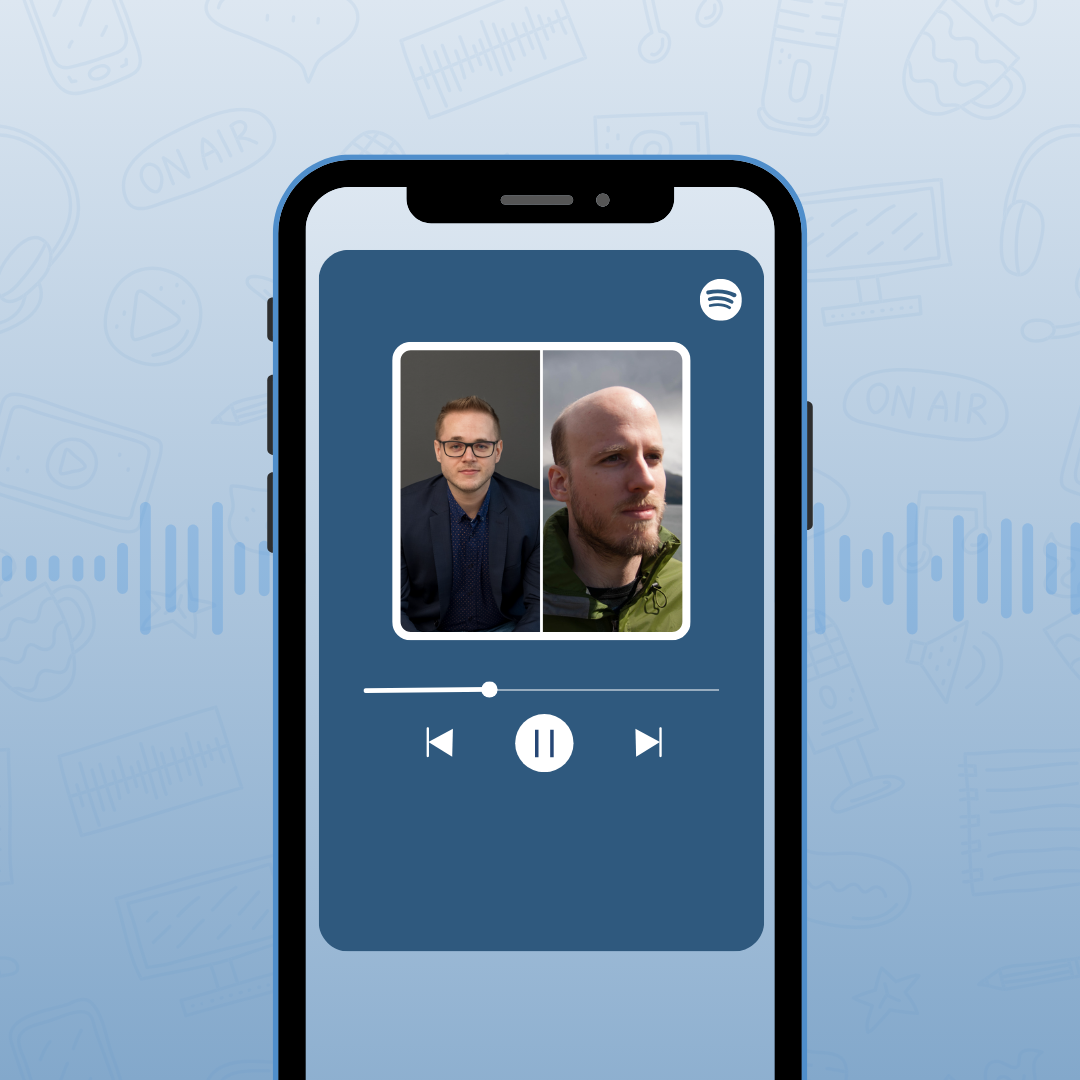
How to have an effective 1on1, and why is it important?
Written by Danubius IT Solutions
As a manager, have you ever reorganised your meetings to make more efficient use of your already limited time, to fit that sales presentation, engineering briefing or management coffee in? Can you recall how easy it is to reschedule that certain 1on1 with Peter – “it’ll be fine in three days, won’t it”? Or did you just cancel one, because “we just talked three weeks ago, he’s working, he’s improving, I don’t see a problem, let’s talk next time”?
It happened to me several times, but after a while, after a series of realisations, I really tried hard to treat 1on1s the way we all should: as one of the most important development and confidence-building opportunities - not only from a managerial point of view, but also as an employee. What’s worth knowing about this topic?
How can it go wrong?
Before we deep dive into the many ways in which a culture of 1on1 meetings can bring positive change to an organisation, let’s look at how such an opportunity can be botched and counterproductive.
-
The first one I just mentioned probably happened to many of us: we reschedule, cancel, we are late, which sends a non-verbal message (especially if it happens very often) that we don’t value our time with the other person.
-
During the meeting, we don’t pay attention to the other person at all, we ask inquiring questions, but while listening to the answer, we are touching the phone or clicking on the computer, email, or we do other tasks that require little focus.
-
We rush, consistently and regularly fail to take the time to discuss important issues, fail to provide sufficiently detailed feedback, fail to touch on and discuss opportunities and path for improvement.
-
From the management side, we only want to know about the progress: “What about this? What about that? How’s Project A going? Did you do the report? Have you finished backend code review?” While it’s certainly important to be aware of how such tasks are going, using a conversation for that alone is inefficient and fails to tap into the deeper potential of 1on1.
-
We degrade it into a announcement parade: we are constantly talking from the managerial side, telling this and that, news, events, what’s going on in the company, what’s expected next period, etc.
-
Prompt, immediate reaction to ideas that may be sensitive, require complex work to completely share, take more time to express, and presuppose an atmosphere of trust. Wait for the other party to clarify what he or she is thinking as precisely as possible, so that many misunderstandings can be avoided.
-
Schedule 1on1s only because “others” do it as well. Don’t go for superficial conversations, it makes no sense and has negative effect.
What can you gain from a 1on1 done correctly?
Trust building
Studies show that in a safe environment, where people can share their thoughts with each other and their manager without fear, colleagues are more productive, their work has higher quality and people are more confident in general. It’s also worth bearing in mind that in more than half of the cases, the leaving employee is not changing jobs, but changing managers, so building a direct, predictable, honest relationship is also beneficial for the team itself, not to mention the easier communication and day-to-day work, which is a clear consequence of this. Since 1on1 meetings can change the atmosphere towards trust in the first place, we also have a huge responsibility to shape the company culture as a whole. It’s also where we can get to know each other more deeply - it’s worth bringing up personal issues if there’s an openness to do so on both sides.
Feedback, improving performance
In a large corporate environment, performance feedback cycles are most often one year, maximum six months, and this frequency is not sufficient for Generation Z born after 1995 (and in many cases not even for those born before). They demand continuous feedback, measuring, opportunities to do more, to improve personally. Regular feedback can be completely curated, specific to the current situation, concrete, so it is much easier to avoid the trap of generalisation.
Development path, inspiration
As a leader, we have a responsibility to help our team member grow personally and professionally, but the other party has to do at least as much to travel on this way. We must create the opportunity, but our team member must take it. If both parties come into the meeting with this in mind, we can develop a 1on1 structure that builds respect, trust, by which we can give each other fair feedback, can grow, and the team will be better as well.
As an organisation
A more cohesive team, and a trusting relationship with the leader, in addition to higher performance, has been shown to result in lower turnover and team members feel more valued. Research also tells that the two most accurate indicators of engagement are the extent to which a colleague is given opportunities for self-development while doing the job and the healthy relationship with the manager. So it is worth focusing on development and improvement, and the first step is to gather information about your colleagues, for example through your 1on1 discussions.
How to have an efficient 1on1?
As with all advice on building organisations, these are not unchangeable axioms set in stone, but rather suggestions that we believe working from previous experience. Worth going through not only from a managerial but also from an employee (IC) perspective.
-
Both parties should be prepared with topics beyond the current ongoing tasks. It’s worth finding a general structure that doesn’t necessarily need to be defined in writing, but that you both know what to expect (some examples: personal chit-chat, work experiences in last period, mutual feedback, discussion of specific situations, career path, next steps, additional tasks that are more challenging compared to current maturity/knowledge level, etc.)
-
Once the structure is in place, both parties should be engaged, focused, no emails in between, in fact I suggest going without a computer if possible (in the online world, in current virus situation, this is largely impractical if not unsolvable entirely, of course), if notes are to be taken, do it on paper. During the notes post-processing afterwards, we can revisit what was said – if we have the 1on1 right, we’ll definitely have topics to think about.
-
The phrase “manage your manager” is extremely popular these days, and it’s probably the most important piece of advice I could give to a team member or even a fresh colleague. No one knows what you need better than you, how you want to develop and in what direction. It takes a dose of personal and professional self-awareness, and a good leader can help you along the way with assessment and guidance questions, but help him or her once you’ve figured out what your path is. Even without explicit questions, if you share your insights on 1on1 meetings, sooner or later it will be getting clearer and clearer: “How could things be fixed, repaired, improved? How can I contribute to this? I really enjoyed this and this, that and those less, how can I get more of the former ones? In what position could I be more likely to encounter these kind of tasks?” Feel free to ask your manager about his/her insights, as he/she presumably has a broader view of the field. (Important: I’m not talking about deep technology here, you might know twice as much as he/she does.)
-
Don’t talk too much as a manager on 1on1. Ask questions, try to clarify things, and when you think you understand, ask another question. I’m not a fan of rules of thumb, but if I had to say one anyway, I’d say that your subordinate should talk about twice as much as you, the 1:2 ratio is pretty close to healthy in general.
-
You don’t have to feel like you’ve changed the world at the end of every 1on1, but if nothing worth mentioning happens for months, it’s worth rethinking things based on the points above. If you feel particularly great afterwards, or if you feel weird (understand well), then that means something happened there, something is changing, in a good way you are improving. Look at these feelings and draw the right conclusions, you can talk about them in the next 1on1 as well.
Summary
The subject is not easy, I can count on one hand the hundreds of my colleagues, past and present, who have done this really well. However, it’s worth dealing with it, because our mood, our performance, our work methods, and, through it, our future, are all affected by this kind of meeting in the workplace. We did not cover the COVID-19 situation specifically, but it can be even more important to take care of each other with proper attention as well.
At Danubius, we are not experts in 1on1s, but trying to continuously improve in this area, because we value our colleagues and the atmosphere of trust. The positive impact of this process is very clear: we can efficiently perform quality end-to-end software development in multiple domains.
This post was written by István Kis, Engineering Manager at Danubius IT Solutions.
Interested in IT solutions tailored to your business? Contact us for a free consultation, where we'll collaboratively explore your needs and our methodologies.

.png?alt=media&token=6167f0c8-f152-4da9-8498-30e472899817)
.jpg?alt=media&token=7f5e6011-729e-4df8-bbe4-e97d3ab885a8)
.png?alt=media&token=284268ac-cb06-42d5-8d1d-9e607067237c)

